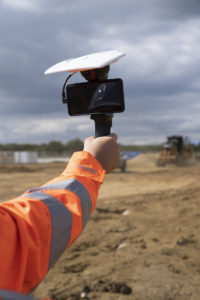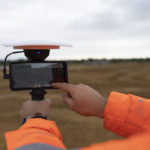Construction is typically seen as slow in its uptake of digitalisation, but times are changing. The rate of construction worker retirement looks set to increase, as 22 per cent of the workforce are over 50 and 15 per cent are in their 60s. In this article Ian Barnes, Head of Business at SITECH, the UK & Ireland’s sole distributor of Trimble machine control technology, site positioning systems and software for heavy construction and civils, discusses how construction is rapidly embracing digital technologies.
One major reason for the uptake of technology in construction is that it can act as a bridge of the construction skills gap. Technology is helping to reduce the amount of manual work employees perform, meaning construction businesses can make the most out of the available workforce. As well as this, technology is making a myriad of tasks more accurate, cost-effective and productive.
 A vision for the future
A vision for the future
One of the most promising innovations in the industry is augmented reality (AR) technology, which allows construction professionals to view all phases of their project before work even begins. There is no comparison between this and a traditional 2D paper drawing, which can be difficult to interpret and is not interactive. Using traditional methods, the user might not identify eventual design clashes and other inaccuracies until the project is well into construction.
AR allows professionals to interact with their environment in a completely virtual way, so they can pinpoint potential problems at tender stage. It also opens up the possibility to visualise underground elements to prevent any service strikes, saving time and money and avoiding any reputational damage. Safety is another benefit, as the operator can visualise the 3D model by aiming a display at it, meaning that workers will no longer have to walk on rough and uneven ground to survey the site.
Easy visualisation also allows contractors to engage their stakeholders by giving them a more concrete idea of the final build. Stakeholders might not have the skills needed to interpret a traditional 2D design and might therefore be sceptical to invest in something that they can’t clearly picture. Thanks to mixed reality, everyone involved can now immediately understand how the proposed project will look, skipping the expensive and lengthy proposal of commissioning a site design from an engineering company.
One example is the Trimble® SiteVision™ platform, which combines state-of-the-art AR technology with Trimble® Catalyst high-accuracy GPS to overlap 3D elements to the user’s field of vision. In this way, the user can see in 3D the proposed landscaping and architectural infrastructures, as well as buried utilities and other underground services.
Power’s nothing without control
Machine control technology is another innovation currently revolutionising the construction industry. Though the concept itself is not new — the first software for machine control appeared in the late 1990s — the level of precision and sophistication that this technology has now reached is impressive.
A machine receiver and a machine display form what is known as a cab kit, the nerve centre of a machine control system. The technology operates using an Android-based platform, so that the user can simply guide the machine’s boom and bucket by setting the desired parameters on a tablet. This allows the operator to see the exact positioning of the blade on the display, while the technology will take care of holding the bucket at a perfect grade to achieve the desired slope. The guidance systems use GPS satellite positioning information for maximal accuracy in mapping the area to be landscaped.
Machine control solutions, such as those offered by Trimble®, allow construction companies to increase productivity by 30 percent, making a business highly competitive and increasing the chance of winning a bid. Not only does the technology allow for more accurate machine movement, it also enables construction companies to collect real-time data on the machine’s performance. This gives users a clear estimate of how much work a machine can do in a set time, allowing companies to plan their jobs in a much more reliable and efficient way.
The possibility to communicate data in real-time allows contractors to report on site progress to a client without leaving the office. It also enables companies to offer fairer prices, based on the project and not on time, which is compelling to both clients and contractors. Planning the job efficiently also reduces equipment wear and tear and improves fuel efficiency, so that contractors can save money while also working in a more sustainable way.
Machine control technology is beneficial regardless of the operator’s level of expertise. While a novice can find it particularly helpful to prevent gross mistakes, an experienced operator can still appreciate the possibility to drastically speed up the job while alleviating fatigue.
The versatility of this technology can also guarantee return on investment (ROI) for companies that are beginning to invest in digitalisation because they can easily switch it between machines. Contractors who are not familiar with the technology can invest in only one system and retrofit it to various machines to increase productivity at different stages of a project. It’s also possible to hire the technology and fit it to hired machines, for maximum flexibility with minimal initial investment.
While the construction industry has typically been viewed as the senior citizens of digitalisation — slow to adopt — things are changing fast. Technologies including AR and machine control are driving the construction industry into a new era, due to the benefits they bring to the operator, and importantly, the customer.









